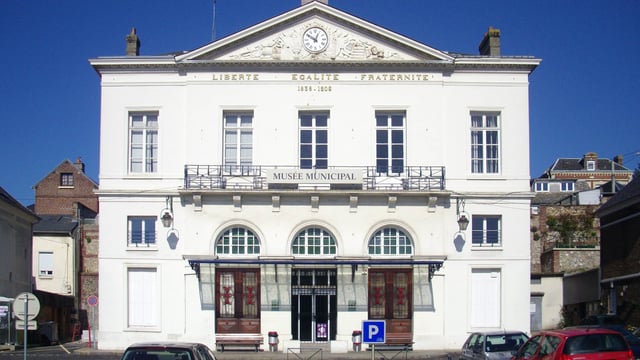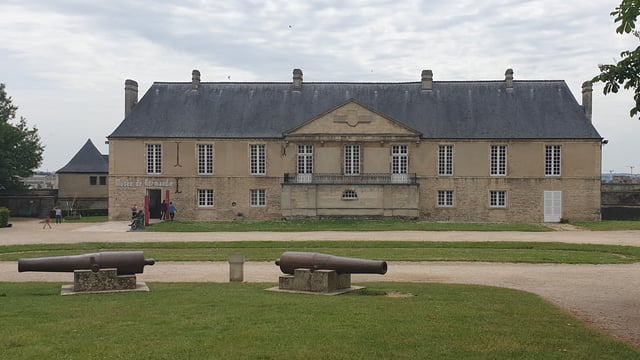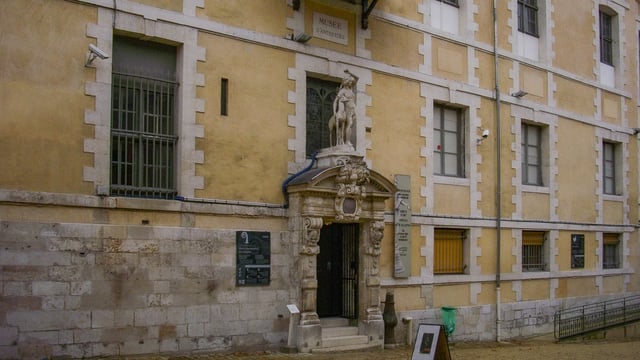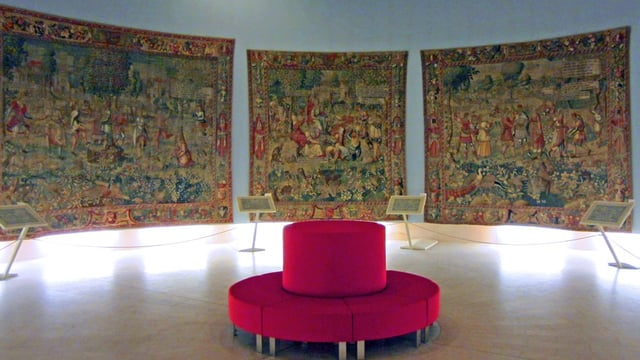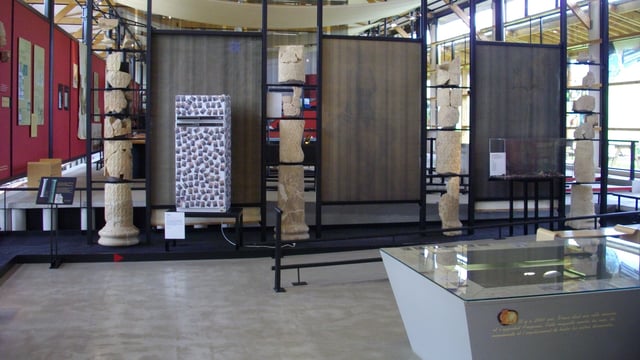Museums & Art Galleries in Normandy
Bayeux Tapestry Museum
The Bayeux Tapestry, neither a tapestry nor from Bayeux, is a 70 m long cloth on which embroidered scenes tell the story of the conquest of England by William, then Duke of Normandy. It is on display in Bayeux seven days a week from 1 February to the end of December. In a darkened gallery, the full length of the loth is on display and audio guides in multiple languages allow visitors to follow the story. A short film (in English and French) and permanent exhibition provide a detailed overview of the Anglo-Norman kingdom in the 11th century.

Juliobona Museum
Directly opposite the Roman theatre on the Place Félix Faure is the Juliobona Museum. The museum houses the town’s Gallo Roman collections. When the museum reopens on 13 April 2024, a new set of displays will be unveiled. Within a series of exhibits showing what life was like in Roman times, for the first time the so-called ‘Domina tomb’ will be on display. These include the artefacts from the burial of a young girl from the aristocratic elite of Juliobona – the Roman name for Lillebonne.

Musée de Beaux Arts, Caen
The Fine Arts Museum of Caen was founded in 1809, however, the building in which it was house, a former Eurdist seminary, was destroyed by Allied bombing during the Second World War. While many art works were destroyed, those that were not on display had been been removed to safety in 1939. These surviving pieces are now displayed in the new museum built within the ramparts of the Ducal castle of Caen. Besides an impressive collection of contemporary art, on display are Italian, French and Flemish Renaissance paintings as well as a small collection of French Impressionist paintings, including works by Monet, Boudin and Huet.

Musée de Normandie, Caen
Opened in 1963, the museum of the history of Normandy is housed in what was the Governor’s residence within the walls of the Ducal castle of Caen. The building we see today is a restored version of a mansion that was constructed in the 1th century, but badly damaged in WWII. A series of permanent exhibits chart the history of Normandy from prehistory to the Middle Ages; with artefacts from the Stone, Bronze and Iron Ages. Displays focus on the transformation of rural communities through time, first with the arrival of Romans in the area, and then with the advent of industry in the region.

Musée des Antiquités, Rouen
Established in 1831 specifically for the artefacts recovered from the excavations of Gallo-Roman sites in Lillebonne, one highlight of which is a mosaic floor. Since then it has evolved into the departmental museum of antiquities for the Seine Maritime Department. Now, with numerous and varied collections, this museum tells the history of Normandy from the Bronze Age to the Renaissance. Thanks to private donations, the museum also has a fine collection of Egyptian, Near Eastern and Greek antiquities.

Musée des Beaux-Arts, Rouen
The variety of the collection, the breadth of the artistic movements represented and the presence of key works for these movements make the Musée des Beaux-Arts one of the most outstanding public fine arts collections in France. Art from the collections range from the 15th to the 21st centuries. The collection of Impressionist paintings is the largest outside of Paris, with examples of well known Impressionist artists such as Monet, Renoir, Pisarro, Sisley and Caillebotte. This collection also includes many examples of paintings by artists in he Rouen School o Impressionism.

St Lô Museum of Art & History
Founded in 1835 as a local and natural history museum, by the second half of the 20th century the museum had gathered an impressive collection of fine art. The collection is mainly French art from the 17th to 20th century, including paintings from the Rouen School of Impression and a substantial collection of tapestries from the 16th to 20th century. The museum also displays archaeological artefacts from sites around the St Lô region. One highlight being the celebrated Thorigny Marble (an inscribed sandstone statue base) from the Roman town of Vieux-la-Romaine.

Victor Hugo Museum
An elegant 19th century house that once belonged to shipping merchant and master mariner Auguste Vacquerie. And this is a house that the French writer Victor Hugo visited. Hugo’s wife and their youngest daughter are buried in the town cemetery. The Vacqueries were related to the Hugos by marriage. The various rooms have been furnished with period pieces and each has a theme, exploring the lives of various members of both families.

Vieux-la-Romaine Museum
A light an airy museum with many artefacts from the various excavations sites around the tow. These displays show what life was like in Roman times, as well as providing a history of interest and archaeological research in the site town. An interesting film in French and English gives a good overview of the town’ history and significance in roman Gaul. If time allows, this is a good place to start before exploring the different sites scattered around Vieux.





